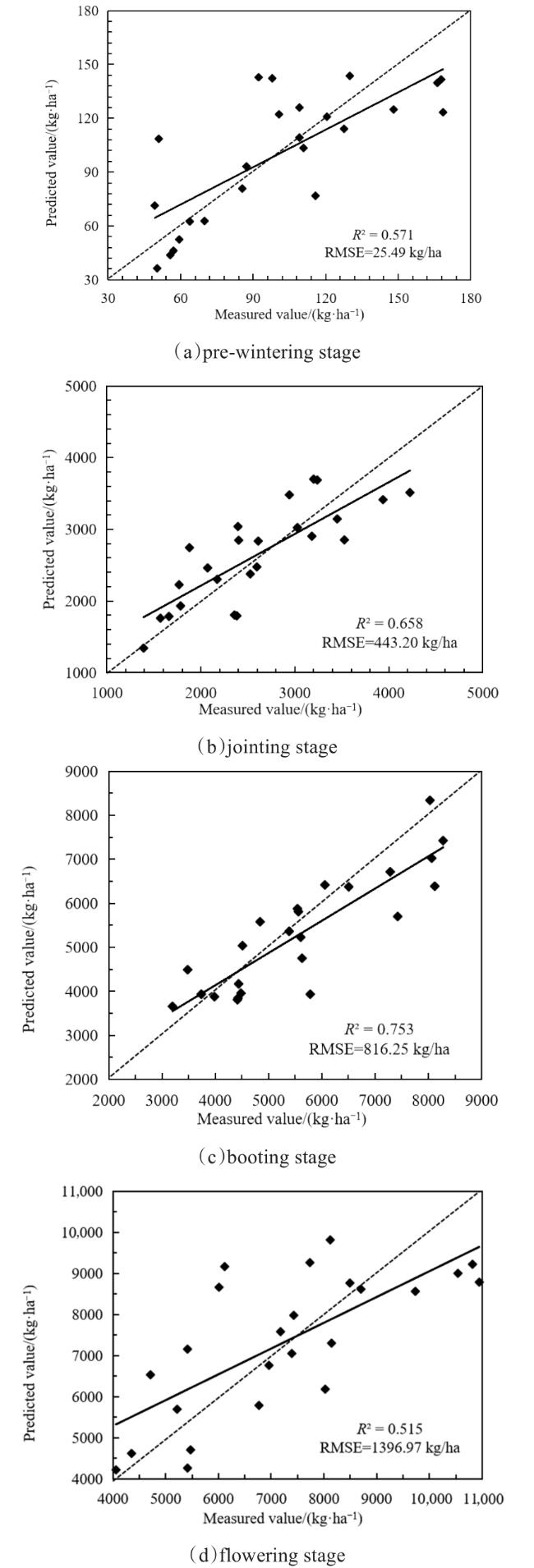Based on the spectral features of vegetation, previous studies have obtained many achievements in using vegetation indices to estimate biomass. Jimenez-Sierra et al.
[3] proposed GBF-Sm-Bs approach by obtaining biomass estimation correlation of 0.995 with
R 2 = 0.991. This result increased the precision in the biomass estimation by about 62.43% compared to previous work. Hou et al.
[4] built a biomass estimation model based on multiple vegetation indices, of which the index model of red edge location was used to estimate the wheat biomass model,
R 2 were all greater than 0.8. Liu et al.
[5] used arbor as an object to analyze the correlation between biomass and biomass factors, and constructed a highly accurate forest biomass estimation model using the partial least-squares method, the correlation coefficient between the predicted value and the measured value was 0.718, and the accuracy was 90.1%. However, the vegetation index is not sensitive to canopy biomass changes in high-density scenarios and deviates easily when inverting physical and chemical parameters or even agronomic parameters, thus affecting the accuracy of the estimation model
[6]. In response, some scientists have added texture feature information to the spectral features to improve saturation when only spectral information is available, as well as to improve the spatial and temporal discrimination of image information and the estimation potential of agronomic parameters
[7].










